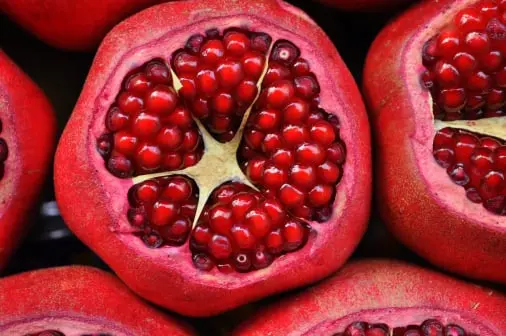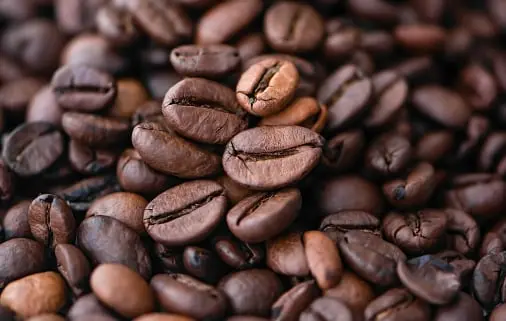Seed traceability app:
Seed traceability app manages sorting, storage, grading, packing, and sales/export of seeds. Full oilseed traceability, cereal seed audits, recalls, quality control. Organic and conventional.

Seed Traceability during production & packing
View Traceability App Specifications.
SEED QUALITY TRACEABILITY
Seed quality inspection app for inspecting seed deliveries, post processing seed QC, and pre shipping seed quality control. Manage entire cereal, oilseed seed business, silo storage, grading & processing and packing. Less waste, better quality seeds!
SEED PACKING TRACEABILITY MANAGEMENT
Seed processing, storage, packing app: easily manage unlimited silos, know exact amount of seeds & their origin & traceability: full sorting, husking, grading, packing, and quality control for seed packing and processing. Manage seed orders & seed exports, audits, and recalls.
SEED TRACEABILITY MANAGEMENT SYSTEMS
Seed business management app CGC: The app manages your seed, oilseed, cereal inventory traceability, orders, seed storage, seed sales, wholesale and export. Full business management solution for grain, seed, and cereal handling. Organic and conventional. Generates paperwork for CGC and other government requirements; saves your time.
Seed tracing can be used to map seed flows, especially as farmers multiply new varieties and distribute them in the informal seed system. The data set can form the basis of an Impact Network Analysis (INA): it forms a ‘minimum data set.’ Mapping the seed flows helps to understand germplasm distribution, conservation, and the spread of seedborne pathogens in a seed system. A network analysis highlights social dimensions of a seed system. For example, it can show how seed access and exchange depend on gender or on household wealth.
It can also reveal which farmers have better access to formal seed. When tracing seed (through snowball sampling), data can be collected on transactions between actors, including volumes, quality and prices. The transactions form the links in the network analysis and the nodes represent the actors, such as breeders, seed multipliers and farmers. Gender, wealth, location and other information can be collected from these actors, depending on the research question.
Examples of questions that the tool can address
How is a new variety spreading from farmer to farmer?
How do men and women share seed in different ways?
What does that mean for effective introduction of quality planting material?

Seed packhouse hygiene checklist for food safety
Seed traceability to be operational from kharif in Telangana
QR code on seed certified by TSSOCA, TSSDC to help trace origin of seed, quality
Seed certification and traceability in the country is set to enter a new era from the coming kharif (vanakalam) season with the introduction of Quick Response (QR) code for the first time in Telangana. The traceability system would come into effect for the seed certified by Telangana State Seed and Organic Certification Authority (TSSOCA) and TS Seed Development Corporation (TSSDC).
Although the Ministry of Agriculture has announced the introduction of the traceability system in 2019 to ensure supply of quality seed to the farming community in line with the system followed in the developed countries, it could not take off at the national level due to various reasons.
First in country
However, the Telangana government has started working on the system immediately.
To take the seed traceability concept forward, the State government has been holding meetings with other government departments and the seed industry for the past few months for shaping an efficient system.
“The system of traceability is ready for implementation and it would be a first of its kind in the country and the model would pave the way for other States to introduce it to control the menace of spurious seed,” Director of TSSOCA K. Keshavulu told The Hindu.
Credibility
The seed certified by the TSSOCA and TSSDC, including that of several seed companies who get certification from the two agencies, would have an added advantage in the seed market with its credibility (genuineness) factor with the further value addition of the traceability factor. The seed certified by the two agencies is supplied to about 10 other States in the country besides within the State.
Being the seed bowl of the country, Telangana meets about 60% of the country’s seed needs besides meeting its own requirement. During 2019-20, about 33 lakh quintals of seed of various crops certified by the two agencies was produced and processed in the State and made available for 2.03 crore acres of cultivation.
Two generations’ record
“The traceability of seed certified by the two agencies with help of the QR Code will include information on who, when and where the seed is produced, date of expiry, when and where the seed is processed and packaged. Further, it will also have the information on who supplied the seed to the producing farmers or the origin of the breeder seed. In all, the code will have the information about two generations of the seed,” Mr. Keshavulu explained.

Seed Traceability management best practices
Seed supply chain: A Technological Movement to Uphold Traceability
India’s extensive agricultural network makes it one of the largest seed markets in the world, with an estimated value of $ 3.6 billion in 2017 and a 17% annual growth rate during 2010-2017, according to Research and Markets. The main challenges in the Indian seed market are the unorganized seed supply chains that compromise the seed health during its transportation and the market for fake seeds. By leveraging blockchain for agriculture management, traceability solutions focus on reinforcing market confidence in seed quality.
BLOGS
The Technology Movement to Bring Traceability to the Seed Supply Chain
India has the world´s second-largest arable area, with 46 soil types in 15 agro-climatic zones. Its extensive agricultural network makes it one of the largest seed markets in the world, with an estimated value of $ 3.6 Bn in 2017 and a 17% annual growth rate during 2010-2017, according to Research and Markets.
However, quality assurance is facing new challenges with the increase of fake seeds in the market. Read on to know how TraceX uses blockchain to trace seeds from soil to fork to back up the brand’s claims and meet consumers’ requirements for certified seeds.
What are the main problems of seed quality control?
In addition to the effects and impact of agro-climatic change affecting the global seed market, two of the main challenges in the Indian seed market are the inadequate seed supply chains that compromise the seed health during its transportation or storage and the market for fake seeds.
Seed fraud is the practice where plant seeds marketed as high-performance have been tampered with or been replaced with inferior products. The illegal seeds are commonly sold under the name of prominent companies, putting at risk the productivity of crops and the livelihoods of farmers who lack an effective mechanism to identify them as such.
Along with the sale of fraudulent seeds comes the illegal planting of transgenic crops unapproved by regulatory authorities, such as in the cases in India of the illicit cultivation of herbicide-tolerant (HT) Bt cotton and soybean, to name a few, that put the health of farmers, the consumer and the environment at risk by stimulating the use of toxic herbicides such as glyphosate to save on the manual labor of getting rid of weeds from the fields.

Seed Supplier Traceability Management
How to regulate the seeds market while making it more efficient?
The answer lies in the supply chain and the seed management system. Startups such as TraceX technologies have translated the features of blockchain technology: decentralized and distributed ledger, fully digitized verification system, and tamper-proof data management to the seed supply chain.
For the agents involved in the seed market, this means being able to trust that the life cycle of the seeds will be traceable from the nucleus seeds, through the crops, and into the hands of the end customer.
This not only prevents manipulation attempts and better controls the quality of each seed but adds value to the end product by giving consumers a chance to know what route their food has taken to reach their tables.
How does seed supply chain traceability works?
By leveraging blockchain for agriculture management, the TraceX traceability solution focuses on reinforcing market confidence in seed quality while offering a competitive advantage to brands seeking to back up their quality and reliability claims on their products.
Why does seed supply chain traceability matter now?
According to the Mitsui & Co. Report (2019), due to the diversification of consumer needs, a fundamental shift has been observed in the seed industry.
Instead of the traditional product-outside approach, whereby development, production, and sales are conducted from the perspective of suppliers (growers and manufacturers), the focus is shifting to a market-in business strategy based on consumer needs, which are leaning heavily towards a more conscious consumption targeting food safety and a low impact in the environment.
For this consumer-oriented style of seed business, the application of blockchain in the agricultural sector plays a vital role by solving multilevel seed management issues and giving the consumers precisely what they are asking for, transparency and accountability, which is why multinational companies such as Unilever, Nestlé, and Walmart already have blockchain-based solutions for their food supply chains.
Quality assurance and maintaining a transparent and robust seed system for any modern seed market will be essential for a country’s food security and comes to the forefront as the key to boosting and accelerating agricultural growth.